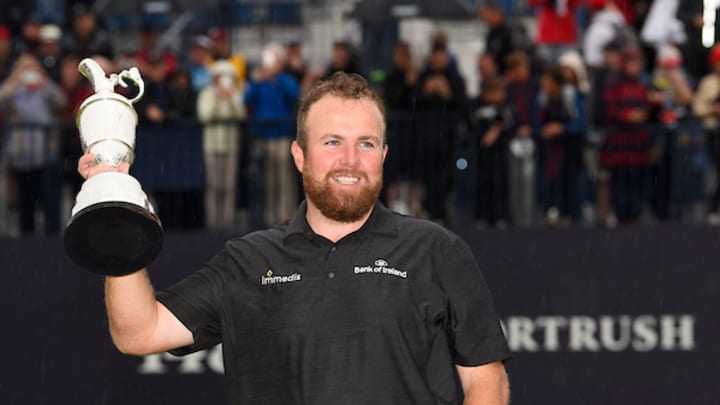Open rota should include more Irish links

PORTRUSH, Northern Ireland – It’s only fitting and proper that I nurse a Guinness as I write this commentary. If only for a few days, thanks to Shane Lowry, the world – the golfing world, at least – can celebrate a united Ireland.
Only 24 hours earlier, I left Royal Portrush’s Dunluce Links convinced that Lowry couldn’t possibly hold it together on Sunday. The pandemonium after he posted a third-round 63 was akin to the home side celebrating a Ryder Cup victory. C’mon, people, I thought. There’s still 18 holes to play.
On Sunday afternoon, as Lowry prepared to begin the most important round of his life, tens of thousands of giddy spectators enveloped hole No. 1 from tee to green, including a full house at the 100-yard long, two-tiered corporate hospitality complex overlooking the fairway on the players’ right. When Lowry’s opening tee shot drifted into the left rough, and he found a bunker with his second, it appeared as if the previous night’s coronation was disappointingly premature.
But Lowry jarred an 8-foot putt to save bogey, and Tommy Fleetwood, beginning the final round adrift by four shots, missed a 6-footer for birdie. “That settled me an awful lot,” Lowry said.
“He never lost control of himself,” said Fleetwood, the eventual runner-up (scores). “He did better in those moments than I did today.”
Lowry’s stretch of four consecutive 3s, beginning at No. 3, made me a believer.
“All the chasers would have wanted tough conditions,” said Lee Westwood, who tied for fourth, referring to the notion that wind and rain might level the playing field. “[He] clearly played brilliantly, to be on the score he has, under the pressure he’s under.”
How tough were Sunday’s conditions on the Dunluce Lunks? J.B. Holmes, had he spoken with the media, could have told us. The 36-hole co-leader who began Round 4 six shots behind Lowry, posted a closing 87 and tumbled into a tie for 67th place. It was humiliating, to be sure. But every golfer knows that’s the nature of the beast. True professionals gather themselves and face the music.
Only 15 players bettered par 71 in Round 4, and none of them began in the afternoon, when the weather got nasty. Tony Finau, who teed off at 1:07 and shot 71 to finish third, said: “We got the worst of it. It started raining and blowing sideways.”
The Dunluce Links received rave reviews all week from a crowd that often complains about championship venues being “tricked up” to make them more difficult. “Tough but fair” was the description most often heard.
If anything prompted complaints about fairness, it was the rules change implemented this year that reduced the time allotted to search for lost balls to three minutes from five.
Were it possible to research the major tournaments in which players lost the most golf balls, surely the 148th British Open at Portrush would be in the top three. The rough was so thick in places that shots drifting only a few yards off the fairway ended up costing stroke and distance. Players found out just how short three minutes can be, a revelation that hit home for Graeme McDowell late in Round 1 when his missing ball was found 18 seconds after the search officially had been terminated.
During rounds of 67-67-63-72, Lowry didn’t lose a ball. He led the field by hitting 57 greens in regulation. That’s a significant stat, considering how often Lowry gets up and down when he does miss a green.
Admiration of Lowry’s deft short game is universal among his peers. “He’s maybe the best chipper I’ve ever seen,” McDowell said.
Lowry proved his mettle, as well. “To shoot 1 over in the lead, in these conditions, that’s unbelievable,” said Brooks Koepka, whose signature bravado gave way to bogeys on the first four holes, leading to a T-4 with Westwood.
Fleetwood had his chances, but the unusual circumstances proved to be unnerving. Not only was the Englishman playing in the last group on the last day of a major for the first time, but he found himself in the rare position of not being the crowd favorite.
Lowry, meanwhile, embraced the adoration.
“It’s funny,” he said, “I sometimes struggle to play in front of the home crowd, but not over the last few days. I played lovely.”
Now that Portrush has aced its Open audition, look for a return to the Dunluce Links as soon as 2026, depending on when Muirfield is released from the penalty box for its recently ended ban on female members and whether the R&A is willing to push Troon, Birkdale or Carnoustie farther down the road.
Because the British Open is always contested on links courses, McDowell, who grew up in Portrush, suggested that now’s the time for the R&A to expand the “Open rota” to include the Republic of Ireland, which features links courses that are comparable to, and in some cases even better, than those in Scotland and England. Branching out from the U.K., he said, would dovetail nicely with golf’s efforts to be more inclusive.
That’s an idea worth pondering over a Guinness.
Dave Seanor has been a sports journalist since 1975, including a 13-year stint as editor of Golfweek magazine. He has covered golf in 25 countries, including the 2016 Olympics in Brazil. Email: daveseanor@gmail.com
